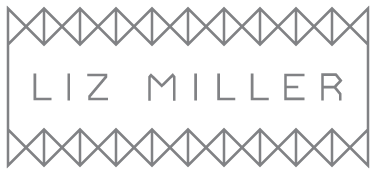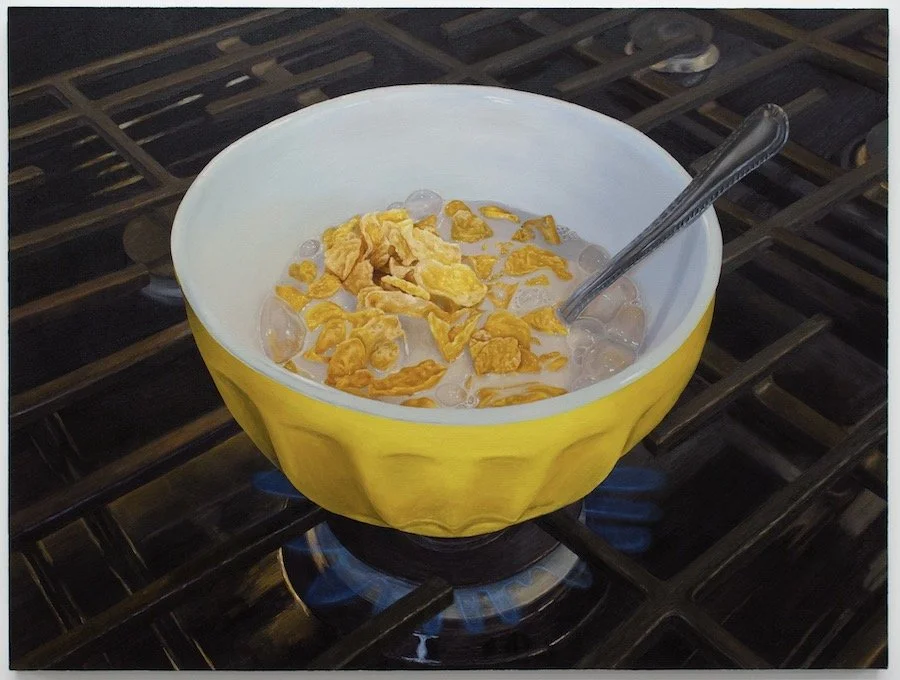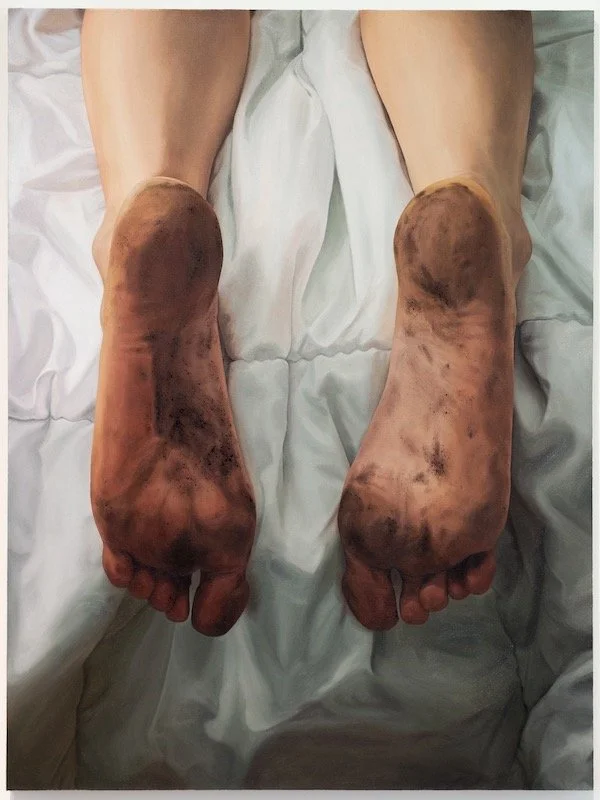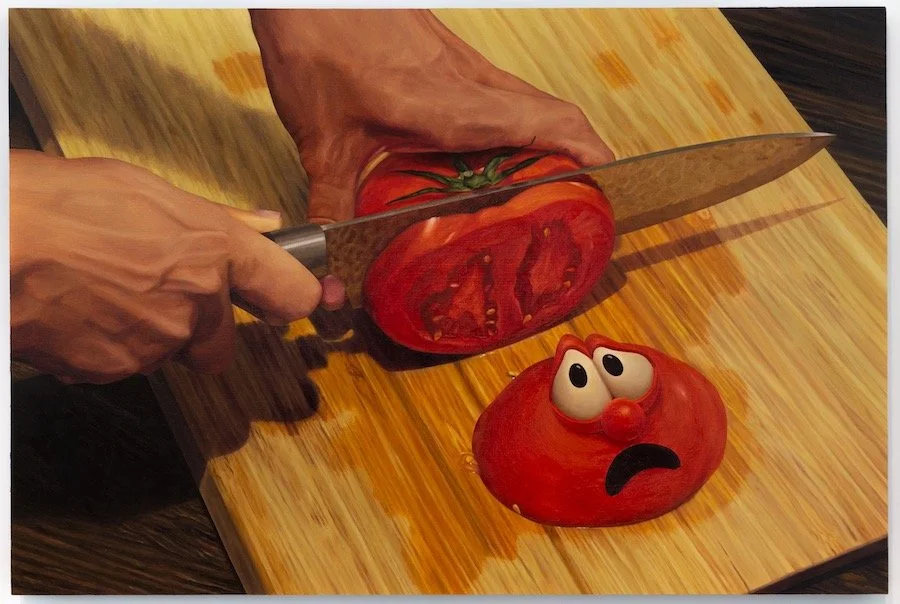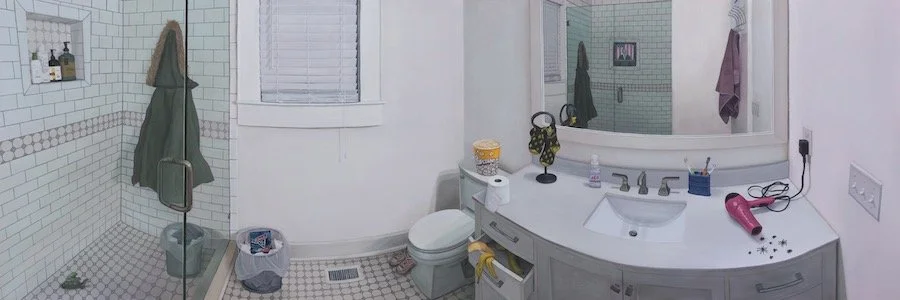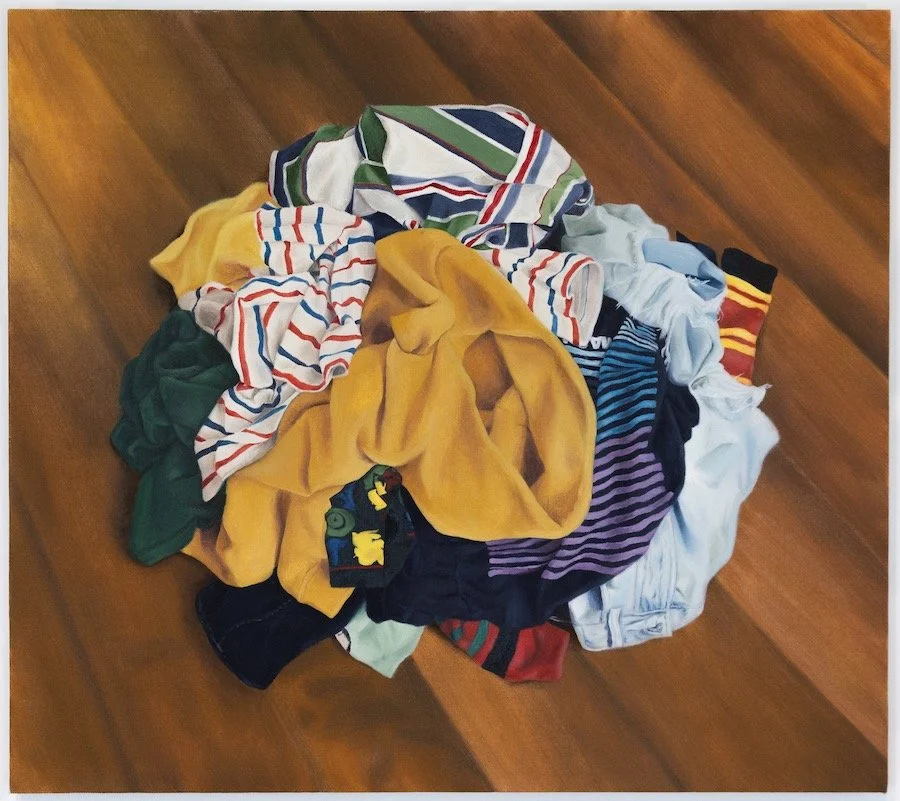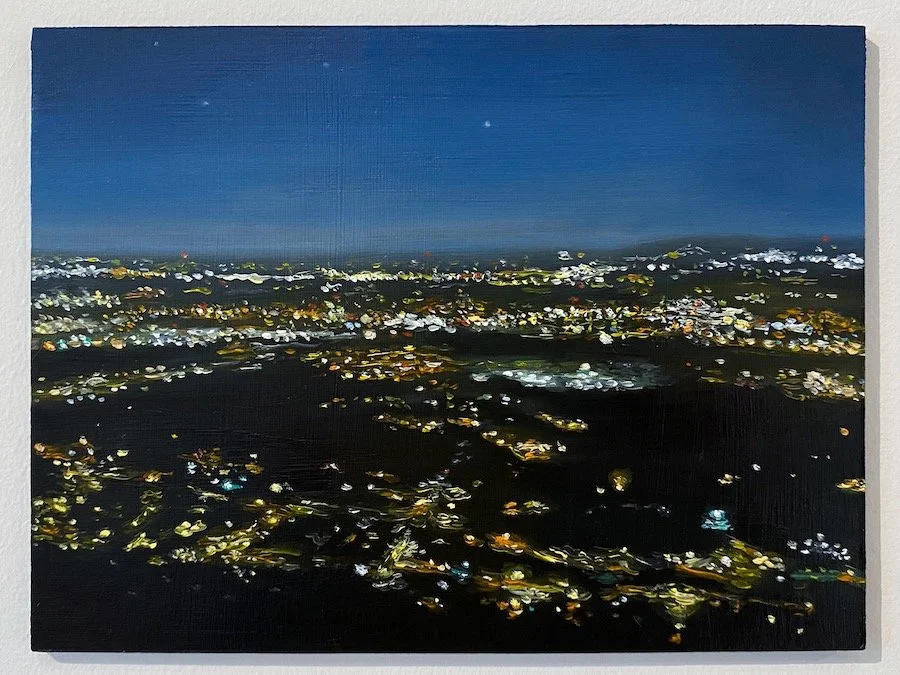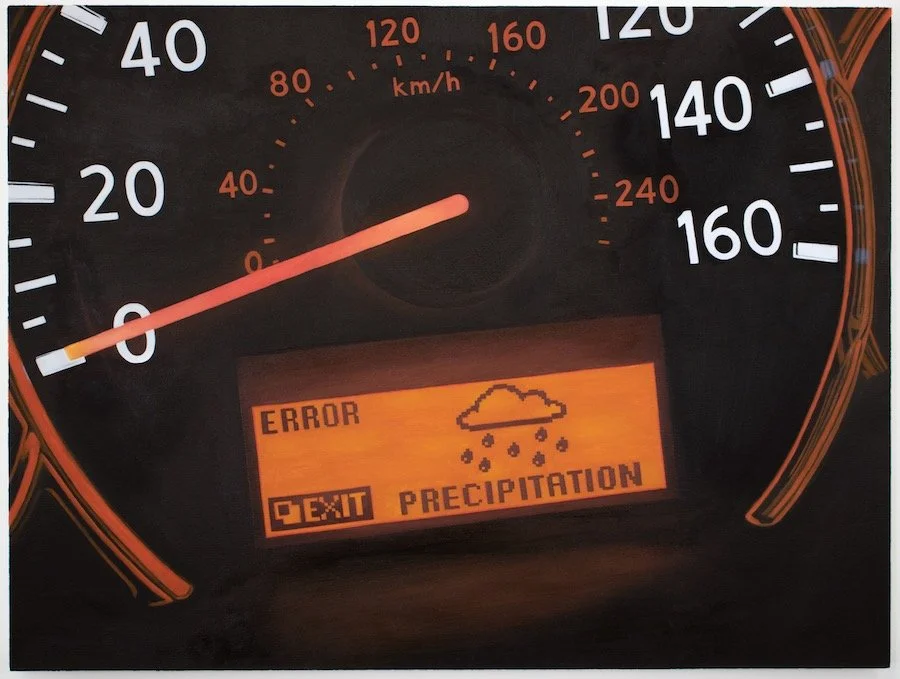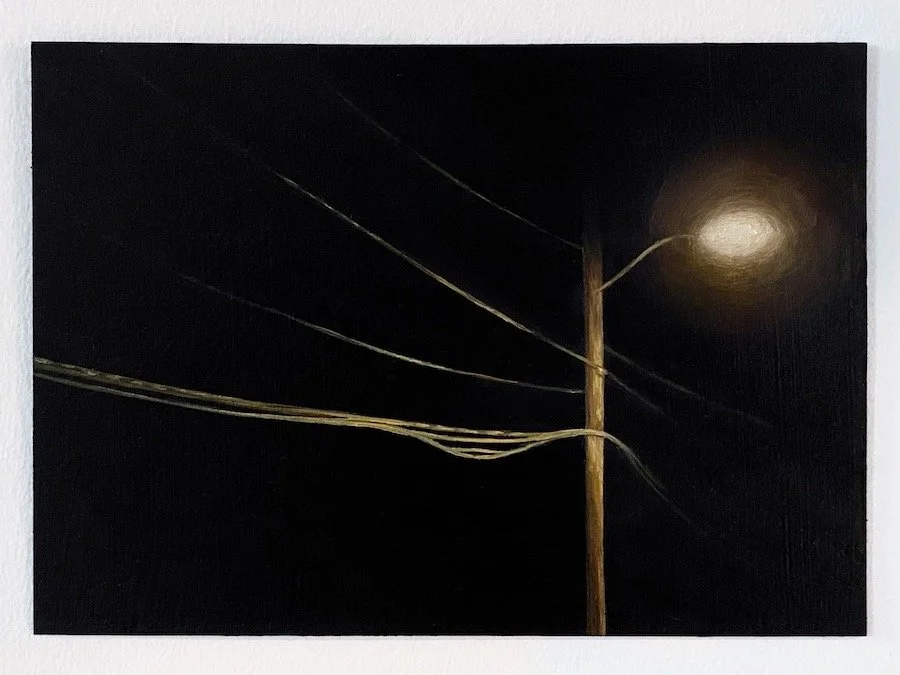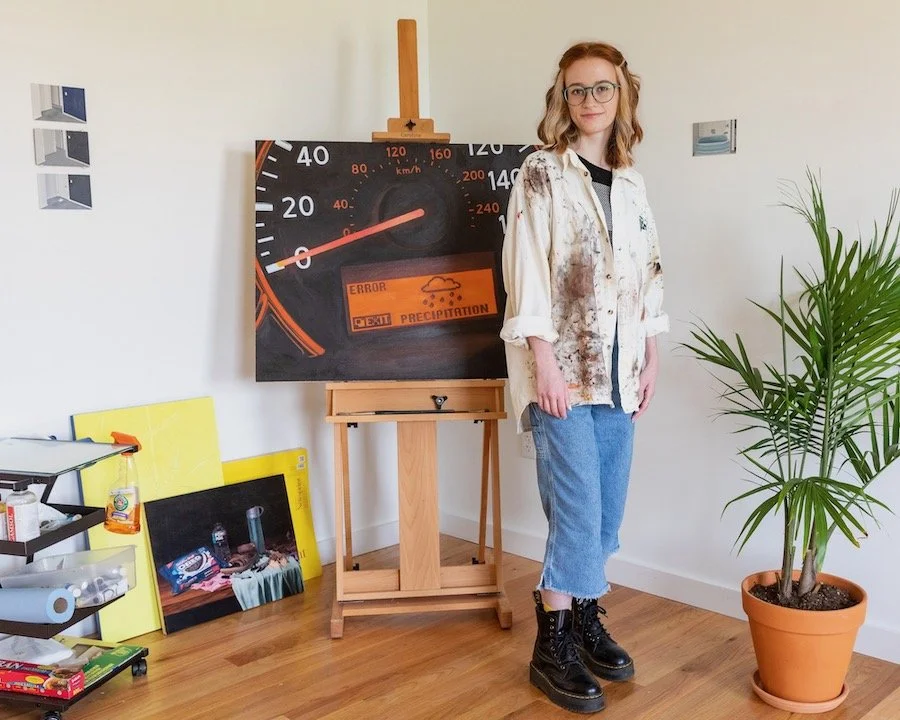"The audience has a sense of wonder in what will happen next, probably because I also do!" : An Interview With Victoria Sauer
When I first encountered the work of Victoria Sauer in Chattanooga this summer, it stopped me in my tracks as I walked down the pristine hallway at Stove Works. Not just because Sauer’s paintings are highly skilled, but because of the emotion and humor and visceral response that Sauer is able to elicit through realism. Although I’m hesitant to compare artists to one another, I see in Sauer’s work some of the same qualities that have continued to draw me to the work of Catherine Murphy over the years. So it was a real honor to have the opportunity to talk with Sauer about her approach to making her magical paintings. Here’s our conversation:
Victoria Sauer, Cereal, 2019, oil on canvas, 30 x 40 in., photo courtesy of the artist
Liz Miller: Your paintings give me the feeling like I’ve just stumbled upon something I’m not supposed to be looking at—as if I’m getting a secret glimpse into the inner life of the person who the objects belong to, or a secret glimpse of a drama that’s playing out. But I’m also reminded of a video interview I watched with realist painter Catherine Murphy. In the video, she dispels any notion that her paintings are just scenarios she stumbled upon—they are carefully constructed fictions based on Murphy’s desire to exert ultimate control in what she presents to the viewer. What is your process? I know you work from photos you’ve taken, but I wonder how much you construct the scenes you paint, and how much the paintings emanate from something that you stumble upon in your daily life and then expand upon?
Victoria Sauer: Truthfully it’s a little bit of both! My imagery always comes from somewhere outside of purely just my imagination—whether we’re talking about the reality-based works that I do typically stumble upon, or the dream-based works that appear before me in unconscious nightly visions. However, in both cases, I often have to reconstruct these scenes myself before photographing them and ultimately choosing the final image(s) to work from. It’s actually a really fun process of my practice that I take pride in; it feels sculptural. And for the certain works that push just outside the bounds of what’s physically possible in our own reality, I sometimes have to take the image into a digital space to work some collage magic, or just work from several images at once and piece it together on the canvas as I go.
P.S. Catherine Murphy is one of my greatest inspirations!
Victoria Sauer, Discomforter, 2021, oil on canvas, 40 x 30 in., photo courtesy of the artist
Liz Miller: I find your paintings suspenseful—there’s almost always the question of what happens in the next scene if I look away for a moment. There’s also a dramatic sense of light and shadow, and the way that they are cropped often creates a kind of discomfort. I’m reminded of film and television. How does the idea of narrative inform your work?
I think film and television heavily influence the work, but on a super subconscious level rather than narrative, specifically in the cropping. I consume so much of TV/movies, I feel like it’s reflected in how my brain appears to be wired in a specific way in regards to how I see and perceive the world around me. My eyes themselves seem to operate like a camera lens when I see something that sparks my interest as a potential subject—lenticular vision, perhaps. Before I was an art major, I actually wanted to go to college for film/TV and make movies. No regrets though, maybe in another life. While I still haven’t learned the skills of actually filming or producing movies, it seems like the vision is still there in my paintings!
Circling back to the idea of narrative, I think it’s always implied in my work but never given in detail. These moments that are depicted and frozen in time are true to themselves in how I discovered/dreamed them. The audience has a sense of wonder in what will happen next, probably because I also do! I love the fantastical discussions that spawn from surrealistic work and actively engaging with viewers in a genuinely fun conversation of whimsy and potential narrative. As the observer and the dreamer, I may have a tad bit more insight, but really not by much. I like to think that I know where it may have started, but I’m not so sure how it will end.
Victoria Sauer, God Wants Me to Forgive Them!?!, 2021, oil on panel, 18 x 27 in., photo courtesy of the artist
Liz Miller: When I look closely, many of your works make me laugh--but because of the way they are painted in such realistic detail, it’s not the first reaction I have, or the reaction I expect to have. I enjoy the tension between the content and the way the content is delivered. How does humor figure into your work?
Victoria Sauer: Painting realistically is innate to me and it’s the way I prefer to paint, and it took a bit of time to accept that and own it rather than trying to be something I’m not. That being said, I want my work to be more than just “photographic.” So I’ve learned to make the most of the immediate intrigue of realism on a technical level as a way to reel viewers into the work, as well as a visual grounding tool for the viewer to recognize what is familiar and recognizable to them. But I do strive for there to be more to experience after that first look, and humor definitely seems to be one of those things. I think it comes naturally with humor being my biggest coping mechanism in life; there’s always going to be something to laugh at even in dark times. Absurdity is a huge part of my work and is the root of the surrealism, again, often stemming from the more dreamlike angle. The idea that this can’t happen (impossible), or shouldn’t happen (illogical), or “I don’t want to see this” (discomfort), will crop up here and there. Instead of a well-articulated comedic joke with a punchline, the humor comes from more of a disorienting “what the heck?!” standpoint.
Above: Victoria Sauer, I Woke Up Asleep, 2020, oil on panel, 2 x 6 ft.
Below: Victoria Sauer, Dirty or Clean?, 2018, oil on canvas, 24 x 27 in. photos courtesy of the artist
Liz Miller: I find the idea of realism particularly compelling as we head into 2022. What is real? What is fake? We are dealing with this on so many levels right now, not just in terms of images, but in terms of information. Were you always interested in realism? How do you see the role of realism and painting in the time in which we live?
Victoria Sauer: I believe I’ve always taken an interest in realism, but its conceptual form has changed and evolved over time, and probably will continue to do so. After I seemingly pinpointed my muse to be the everyday, the pieces of the puzzle all came together once I had more work under my belt and could draw more connections as to the “why” of it all. While I do still consider the everyday to be a part of my work, I noticed what really interested me were the moments that went just went beyond those parameters. Moments that sort of woke you up or snapped you out of our reality for a second, out of the mundane. Noticing a scuff on the wall for the first time, seeing objects arranged in a peculiar pattern, pulling into a drive thru line of only red cars. Something that just makes you go, “Hmm.” I think when you start to bring your attention to these things, it changes the way you see your surroundings and you notice these moments more and more. That’s how my practice started. And then of course once I started to bring the unconscious observations from my dreams into the mix, it only got weirder! These brief moments that pull me out of my daily routine are a subtle break from the hollowness of monotony and mindlessness. I can see most of my subjects sourced from points of routine that were broken: eating, driving, showering, laundry, etc. And ya know, in the time in which we live, maybe we need these little distractions. Perhaps one reason people find my work to be amusing is because the subjects often seem like they’re not of our world, perhaps a more interesting and exciting parallel universe than the dreadful one we’re stuck in right now.
Victoria Sauer, How did this end, 2021, oil on panel, 6 x 8 in. photo courtesy of the artist
Liz Miller: What are you working on now, and where can we see your work next?
Victoria Sauer: Lately I’ve scaled down and have been working on small works, revisiting ideas of light and darkness amidst the nighttime. Many of them are currently on view in Wavelength Space in Chattanooga! I’ve also got work from my Mediocre Meals series on view at Swan Coach House Gallery in Atlanta, as well as Stove Works in Chatt. And I’ll also have work included in Channel to Channel’s newly opened location in Chattanooga in February. Very excited for that!
Above: Victoria Sauer, Precipitation Error, 2019, oil on canvas, 30 x 40 in.
Below: Nightlight I, 2021, oil on paper, 5 x 7 in. photos courtesy of the artist
Liz Miller: When you’re not in the studio, where can we find you?
Victoria Sauer: If I’m not out working at my several little part-time jobs, I am most likely chillin’ at home! I’ve just recently moved out of my yearlong residency at Stove Works and back into my Chattanooga house with my 2 roommates and their dog—all 3 of whom I spend most of my time with. And of course, consuming lots of film and television!
You can always find me on Instagram @victoriasauerart, or surf my website at victoriasauer.com and/or shoot me an email!
Above and below: Victoria Sauer in her studio. photo credits: Joshua SImpson
Victoria Sauer graduated from the University of Tennessee at Chattanooga with her BFA in Painting and Drawing in the spring of 2020. While still experimenting with many mediums, she often approaches her painting practice in a hyperrealistic manner—heavily influenced by photorealism and surrealism. Working from photographs she takes herself, Victoria uses oil paint to represent subjects that are familiar, yet slightly otherworldly, as she navigates the space between conscious and subconscious. Victoria’s work has been shown nationally from Colorado to Georgia. She currently serves as a curator for online arts collective and residency, Mineral House Media.
